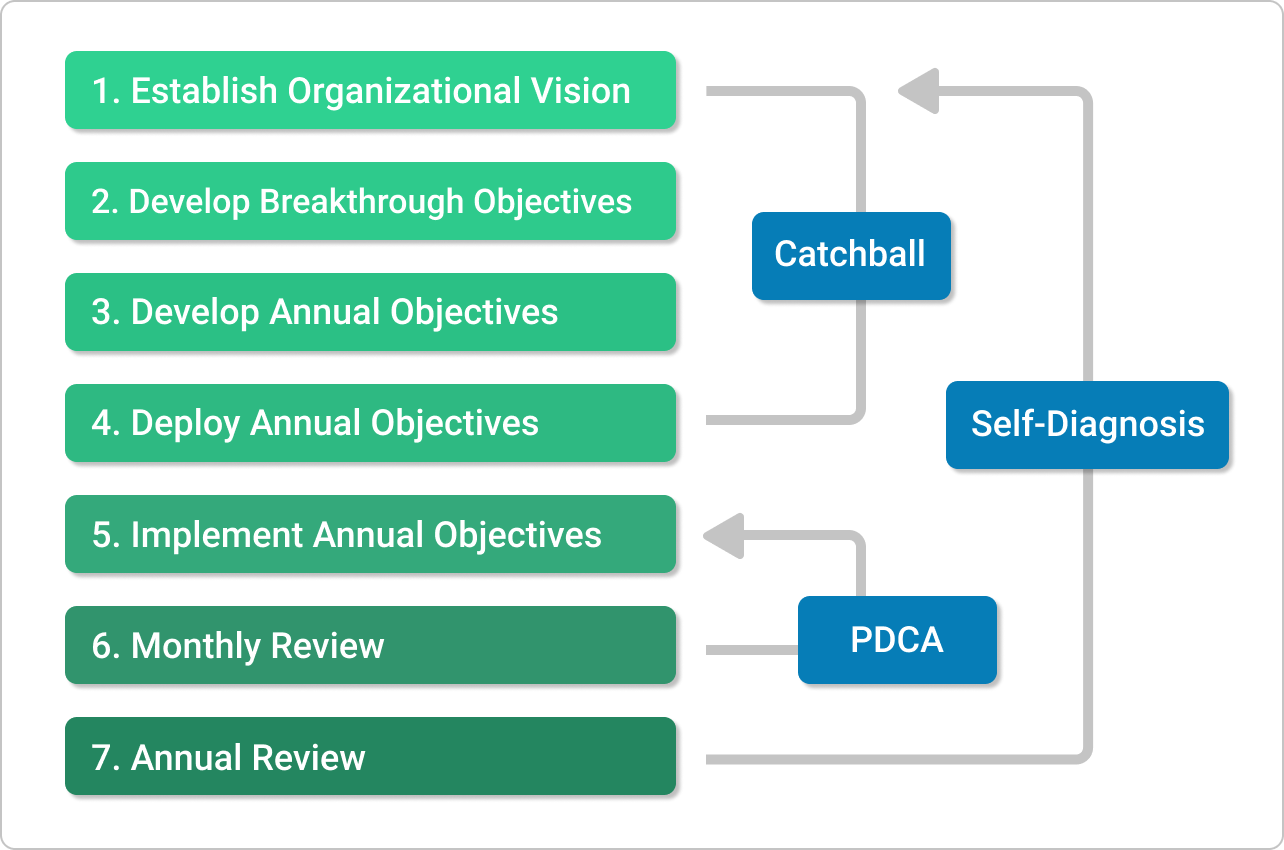Whether you're navigating the complexities of different project management approaches, integrating cutting-edge tools and technologies into your workflows, or striving to maintain clear communication and engagement across remote teams, the need for streamlined processes is universal.
Fortunately, the Lean methodology offers a suite of tools and techniques designed to enhance efficiency and foster continuous improvement. In this blog, we'll explore the 10 best Lean tools that can empower your projects and teams to thrive in the face of these challenges.
What Is Lean?
Lean manufacturing, or simply Lean (also known as just-in-time production, or JIT), is a production methodology whose main purpose is to eliminate waste activities from a production process, optimize productivity and reduce the time to market. In other words, the goal is to sustainably deliver value to the customer.
Originating from the Toyota Production System, Lean emphasizes the importance of continuous improvement and respect for people. It aims not only to improve production processes but also to foster a culture of teamwork and problem-solving. By focusing on streamlining operations and removing non-value-added activities, Lean helps organizations respond more effectively to changing customer demands and market conditions.
What Is Continuous Improvement?
The concept of continuous improvement, or Kaizen, is centered on the idea of perpetually seeking ways to enhance processes, products, and services. It is built on the principle that small, incremental changes routinely applied and sustained over a long period can result in significant improvements. This philosophy encourages a culture where employees at all levels are actively engaged in suggesting and implementing improvements.
Shingeo Shingo, a key figure in Lean, famously said about the importance of experimentation in the process, "Improvement usually means doing something that we have never done before." This Lean principle underscores the belief that improvement is not a one-time effort but a continuous journey toward operational excellence.

10 Lean Tools to Use to Improve Your Efficiency
Let's discuss the common benefits, challenges, and use case scenarios of the top 10 Lean tools.
Kanban
Kanban is a Lean method that originated as a scheduling system for Lean manufacturing and workflow management. In Japanese, the word "kanban" means "visual board" or a "sign". The main features of Kanban are visual boards and kanban cards.
What Are the Benefits of Kanban?
Kanban allows you to optimize workflows and help teams accomplish more faster. Here are the 8 main benefits of Kanban for managing your projects.
- Better visibility of flow
- Increased productivity
- Reduced waste activities
- Increased team focus
- Better collaboration
- Better predictability
- Improved quality
- Increased customer satisfaction
What Are the Challenges of Kanban?
Adopting the Kanban method to your team or organization can pose some challenges, including:
- Organizational resistance to change
- Inconsistent processes and practices
- Team resistance
- Lack of involvement
- Lack of management support
- Lack of collaboration and knowledge-sharing
Kanban Use Case Scenarios
Here, you can see examples of Kanban in practice.
1. Kanban for Software Development Teams: Kanban boards allow software development teams to better organize and prioritize their work around different types. This helps them reduce wasteful activities and optimize delivery. The proper identification of workflow policies improves transparency and boosts collaboration among team members.
2. Kanban for Manufacturing Teams: Powerful Kanban software allows manufacturing organizations to easily track the work of suppliers or subsidiaries using a well-structured kanban board. This practice enhances coordination between different subunits.
3. Kanban for Telecommunications Teams: Support and communications team can easily prioritize huge amounts of work and track support tickets using the Kanban method. A kanban board allows greater time-management control over solving customer inquiries by monitoring the cycle time of each work item (customer issue).
The 5S Method
The 5S is a lean method for workspace optimization that consists of five consecutive steps. They allow teams to organize their workplace for maximum process efficiency. The 5S comes from the Japanese words Seiri (Sort), Seiton (Set in order), Seiso (Shine), Seiketsu (Standardize), and Shitsuke (Sustain).
What Are the Benefits of 5S?
The 5S can be particularly beneficial in different industries and can be applied in manufacturing and knowledge work. Here is a list of the main benefits.
- Separate the necessary and unnecessary tools for your team.
- Minimize waste activities by better organizing your work environment.
- Keep equipment in a perfect state and utilize it to its full potential.
- Standardize the work process.
- Sustain any changes and set yourself up for continuous improvement.
What Are the Challenges of 5S?
Every manager and employee will face challenges while implementing the 5S process. Here is a list of the primary ones.
- Resistance to the program due to the change of culture and the creation of new routines.
- Lack of team commitment during the 5s implementation.
- Resistance to reconsider the definition of "Normal" - a condition where everything is very easy and extremely well organized.
- Unwillingness to understand the intrinsic vs. actual value of the different tools in the workplace.
- Lack of management support.
5S Use Case Scenarios
Here you can see some examples of the 5S method in practice.
1. Manufacturing: 5S allows the production environment to excel in the efficiency of their work process by removing all unnecessary tools and parts from the work area.
2. Software Development: 5S helps software teams prioritize the work required from the customer and separate the necessary steps from the wasteful steps.
3. Engineering: Through standardization of the work process, 5S ensures that engineering teams will follow the same set of process steps when dealing with a specific problem or inquiry.
Kaizen
Kaizen is a Lean concept that aims to continuously improve all functions in business.
The original meaning of the Japanese word "Kaizen" can be translated as "The act of making bad points better". To achieve Kaizen, you need to adopt the practice of self-criticism, which is the Japanese term for "Hansei."
What Are the Benefits of Kaizen?
Traditional Japanese ideas of Kaizen follow five basic tenets: teamwork, personal discipline, improved morale, quality, and suggestions for improvement. These five tenets lead to the following three major outcomes.
- Elimination of waste (also referred to as economic efficiency)
- Good housekeeping
- Standardization
Ideally, Kaizen gets ingrained in a company's culture so that it eventually becomes natural to employees.
What Are the Challenges of Kaizen?
The main challenges to a successful Kaizen implementation are listed below.
- Lack of concerted efforts by management to instill a culture of continuous improvement, such as not acknowledging and analyzing every suggestion and employee feedback.
- False expectancy for quick results is contrary to the concept behind Kaizen, which should be perceived as a culture or a way of thinking.
- Poor implementation of Kaizen as a one-time project cannot lead to a true desire to improve.
- Organizational resistance to change.
Kaizen Use Case Scenarios
Here, there are examples of Kaizen.
1. Manufacturing: The Kaizen culture allows manufacturers to improve every aspect of their operation. These can include eliminating frequent production line issues, equipment availability problems, worker motion reduction, process step review, etc.
2. Healthcare: Continuous improvement is successfully applied in the healthcare sector in multiple ways, from optimizing patient records management and processing to reducing waiting times and improving treatment.
3. Software Engineering: The continuous improvement culture promotes a growth mindset and acceptance of new ideas, setting software engineering on the path to improved quality and increased customer satisfaction.
Value Stream Mapping
The value stream mapping process visualizes the flow of goods from suppliers to customers throughout your organization. This Lean management tool helps organizations analyze critical steps and take future actions to optimize the value stream in a specific product delivery process.
What Are the Benefits of Value Stream Mapping?
Here is a list of the main benefits of value stream mapping.
- VSM helps you identify and remove wasteful activities
- VSM enables you to identify value-adding and non-value-adding activities
- VSM allows you to focus on future improvements by highlighting the current flaws of your workflow
What Are the Challenges of Value Stream Mapping?
Several reasons can make implementing value stream mapping quite challenging within your organization. Here is a list of the most popular ones:
- It is hard to implement value stream mapping where flows are less homogeneous.
- Organizational resistance due to the high complexity of the flows and the presence of many elements.
Value Stream Mapping (VSM) Use Case Scenarios
1. Transport and Logistics: Value stream mapping allows the identification of process waste and process steps where delays occur in the transport and logistics industry.
2. Healthcare: VSM can help healthcare organizations improve their processes for patient' treatment by focusing on the most effective ways and eliminating time-consuming and costly steps. These principles are also applicable to other institutions that support the sector - such as health and wellness marketing agencies - to refine workflows, align with client needs, and enhance overall service delivery.
3. Project Management: In the knowledge and project management domain, VSM helps teams reduce the accumulation of wait time in a system by visualizing the work progress. This creates improved transparency and collaboration in the process.

4. Fashion Industry: Value stream mapping supports fashion retailers and brands in streamlining their design-to-market cycle. By mapping each step, companies can identify delays in sourcing, production, or distribution that slow down product launches. This approach not only helps retailers refresh collections faster but also enables fashion marketing agencies to align campaigns with real-time product availability, ensuring that promotions, branding, and customer engagement strategies are closely synchronized with operational efficiency.
Gemba Walk
The Gemba walk is a Lean management technique that refers to managers observing the actual work process first hand, engaging with employees, and exploring improvement opportunities on the spot. The term "Gemba" translates from Japanese as "the real place". The Gemba walk includes three main concepts:
- Regularly walk and observe the work area to locate wasteful activities
- Actively communicate to identify the problematic areas
- Perform the above activities always with respect for the people.
What Are the Benefits of Gemba Walk?
Practicing the Gemba walk regularly unlocks the following benefits.
- The identification of problematic areas and their resolution happens faster
- Managers and leaders are empowered to create better relationships with the people who create the actual value for the customers
- The direct communication of strategic objectives leads to increased employee engagement
What Are the Challenges of Gemba Walk?
The following challenges may render the application of Gemba walk less effective.
- Assessing personal performance instead of the process as a whole leads to resistance among employees.
- Not communicating clearly the purpose of the Gemba walk can cause misunderstanding and create a feeling of a sudden inspection.
- Instant implementation of changes during the Gemba walk often lacks detailed analysis and change management documentation, creating confusion and uncertainty.
Gemba Walk Use Case Scenarios
1. Manufacturing: A daily Gemba walk on the production floor provides an opportunity for direct communication with the operators and critical input about problematic areas of the process. On the other hand, line operators receive valuable information about the organizational strategic plans, which increases employee involvement and motivation.
2. Customer Service: Gemba Walk can help customer service teams identify the process or phase causing exceeded SLA when dealing with customer inquiries. For instance, a successful observation of the work process may reveal that representatives spend more time converting the request into a support ticket in the utilized ticketing system.
3. Software Engineering: Performing Gemba walks in software development teams allows senior management to easily identify room for improvement by listening closely to what the engineers have to say about processes and challenges. The practice not only helps to analyze and improve work processes but also fosters collaboration across organizational levels.

Andon
The Andon system is part of Lean manufacturing to help operators notice when a problem occurs on the production line. Andon is one of the main elements of the Jidoka method invented by Toyota to improve quality control and avoid defects.
What Are the Benefits of Andon?
The main benefits of applying Andon are listed below.
- Improved transparency: Andon provides immediate reaction to quality, downtime, and safety problems.
- Cost-effective manufacturing: Using Andon, companies can detect production problems early in the process. The result is fewer reworks and lower manufacturing costs.
- Reduction of recurring issues: In an Andon system, all operators contribute to the identification of the root cause of the problem and its elimination which reduces recurring problems altogether.
- Increased customer satisfaction: Lean manufacturing teams constantly improve their processes because they get to the root of problems. This leads to continuous improvement of the quality and thus satisfying customers' needs.
- Reduced downtime: Supervisors and operators can detect and resolve manufacturing problems faster.
What Are the Challenges of Andon?
We have made a shortlist with the most common challenges when implementing Andon.
- Implementing an Andon system can be costly because you need to integrate it into all existing machines.
- Sometimes it is hard to implement Andon smoothly because there are many different machines in a plant coming from different manufacturers.
- Organizations don't collect the existing data in a central database that can be transformed into useful information.
Andon Use Case Scenarios
This is how Andon can be applied in practice.
1. Manufacturing: Applying Andon on the production line helps organizations establish a system for signaling an abnormal state occurring in the production process so they can develop an appropriate plan of action. The various colors in such a system can be utilized to express different conditions and to trigger specific consecutive activities in line with the established action plan.
2. Retail: In the event of multiple customer complaints about the integrity of a certain product, retailers can use the Andon signaling system to stop selling the defective product. The signal should prompt further analysis and review of the situation and develop a plan for minimizing the negative potential impact.
3. Healthcare and Safety: The Andon system is successfully implemented in healthcare to signal a lack of resources, equipment failure, status changes, emergencies, etc. Safety and quality experts widely use the system to improve patient safety.
Continuous Flow
Continuous flow is a Lean approach whose main idea is to produce and move one item at a time continuously through a series of steps instead of moving them into batches. As a result, you will be able to deliver value more frequently to your customers. The idea of continuous flow is to produce only what has been requested.
What Are the Benefits of Continuous Flow?
The continuous flow approach is popular for its ability to create a balanced and defect-free production. Here is a list of the main benefits of continuous flow.
- Reducing inventory and transaction costs.
- Increasing productivity by completing more units in less time.
- Reducing waste activities.
- Identifying and correcting errors easily to improve quality.
- Delivering value to the market more frequently and increasing customers' satisfaction.
What Are the Challenges of Continuous Flow?
Here, you can see the challenges of adopting the continuous flow approach.
- Flexibility: Continuous flow is challenged when changes need to be introduced to the production.
- Lack of capacity to change the flow rate: The approach needs to allow a change in the flow rate to synchronize production with increased demand.
Continuous Flow Use Case Scenarios
1. Manufacturing: The successful implementation of continuous flow line production can lead to increased consistency and reliability of the performance. It brings cost and material savings and reduces the environmental footprint thanks to the lower amount of generated waste.
2. Mining: The standardization of production by the timely identification and correction of process errors and the ability to process and deliver more frequently are key factors allowing industries requiring heavy-duty equipment to increase their cost and time savings.
3. Pharma: A continuous flow process offers the chemical and pharma industry faster and safer reactions, greater energy efficiency, and better control over conditions such as heat or mass transfer. This results in lower levels of waste and environmental impact.
Heijunka
The principles of Heijunka are intended to reduce a process's unevenness and minimize the risk of overburdening. In Japanese, the term Heijunka means "leveling/creating balance". Companies can use it to react to changes in demand and optimize their capacity utilization.
What Are the Benefits of Heijunka?
Implementing Heijunka can lead to the following benefits.
- Reducing inventory costs.
- Avoiding overproduction.
- Preventing teams from overburdening.
- Producing and delivering value to your customers at a steady pace.
- Building a balanced pull system running at optimal efficiency.
What Are the Challenges of Heijunka?
The Heijunka method faces some challenges in its efforts to help you respond more quickly to demand changes and maximize capacity utilization.
- Organizations are highly dependent upon suppliers to promptly react to changes in customer demand which may cause production problems when supplies are delayed.
- Companies practicing Heijunka can be sensitive in the event of machinery or other equipment failures.
- Organizations are not always aware of the commitment, discipline, and planning required to bring the benefits of smooth production.
Heijunka Use Case in the Automotive Industry
The application of product leveling to batch production in automotive manufacturing includes the development of products, prioritizing criteria, and a production plan. The successful implementation of the Heijunka method has a beneficial impact on inventory costs, reliability, lead time, and overall operational efficiency. What makes Heijunka successfully applied in assembly production is its capability to reduce work in progress and help to maintain a steady takt time. It also allows the optimal utilization of inventory, which reduces inventory costs.
Hoshin Kanri
Hoshin Kanri is a 7-step planning process used to communicate strategic goals across the company. The Lean method ensures that the organizational vision, presented in the form of key objectives, results from a mutual agreement between managers and subordinates. These objectives must capture the feedback and efforts of every person in the company. The goal of Hoshin Kanri is to connect strategic planning with execution in a meaningful way. The process can be implemented using tools like the Hoshin Kanri X matrix or digital Hoshin Kanri solutions.
What Are the Benefits of Hoshin Kanri?
The Lean method is known for aligning strategic planning and execution at every company level. Below are some of the benefits of the Hoshin Kanri method.
- Hoshin Kanri helps bridge the gap between strategy and execution by aligning a company's vision and its actionable goals.
- It ensures that strategic organizational plans are executed across the company's hierarchy.
- The method encourages the adoption of a continuous improvement mindset by using specific mechanisms such as the Deming Cycle (PDCA) and Catchball.
- It encourages work ownership and employee motivation by acknowledging feedback.
What Are the Challenges of Hoshin Kanri?
If not appropriately applied, Hoshin Kanri can lead to low team morale or other costly mistakes. Below are the challenges of ineffective Hoshin Kanri implementation.
- Implying certain goals to be executed without collecting feedback hides the risk of employee dissatisfaction and demotivation.
- Implementing annual goal-setting is considered the most vulnerable aspect of Hoshin's planning because of the uncertainty of what will happen in one year.
Hoshin Kanri Use Case Scenarios
1. Software Development: Hoshin planning is ideal for establishing a company vision and breaking it down into achievable goals. Adopting a new software development methodology could be an example of a breakthrough objective in a software development company.
2. Goods and Services: Companies delivering consumer goods can employ the method to break down objectives such as introducing a new product, entering a new market, or expanding initiatives.
3. IT: In the vast domain of information technology, Hoshin Kanri helps to establish a common language and transparency that involves every member in the implementation of a company's business strategy. Key aspects for its success are employee feedback and the implementation of a structured review system.

Just-in-Time Production
Just-in-time production (JIT) is a Lean term representing a simple inventory system that produces goods or services only when there is a demand for them. The JIT principle is the backbone of the Toyota Production System (TPS) and Lean Management. Implementing a just-in-time workflow ensures that the attention is focused on the work in progress and waste is eliminated from the process.
What Are the Benefits of Just-In-Time?
Just-in-time production impacts organizations by strengthening their market competitiveness. Here is a list of the most underlined benefits of Lean philosophy.
- Reduces inventory costs.
- Helps to reduce waste from the process and eliminates non-value-adding activities.
- JIT improves both products and processes by creating a smooth workflow.
- Allows the team to focus on current tasks, which leads to increased productivity.
- Leads to optimized expenses thanks to cutting costs for maintaining extra resources.
What Are the Challenges of Just-In-Time?
Several of the challenges just-in-time production can encounter are related to the flexibility of a supplier's network. Find a list of the JIT challenges below.
- Lack of control over the supplier's flexibility in the event of increased demand.
- May require in-depth training to understand the essence of the JIT philosophy.
Just-in-Time Use Case Scenarios
Here is a list of examples of applications for just-in-time production applied in practice.
1. Manufacturing: JIT allows manufacturers to streamline their systems by identifying and removing waste from the business process. The approach helps to improve efficiency without sacrificing the products' quality. Most of all, JIT helps to reduce inventory costs.
2. Retail: Just-in-time is a powerful Lean concept that allows retailers to reduce their inventory and storage costs and provide goods only when there is a real demand.
3. Restaurant: Major players in the restaurant industry apply the JIT approach to standardize the steps in their work processes, which creates consistency in the delivered quality.
Try Businessmap Free for 14 days
Pavel Naydenov
Marketing Professional | Kanban & PPM Ops Certified
Pavel is a natural-born optimist with 10+ years of experience in the marketing field. By leveraging Kanban, Lean, and Agile practices for years, he drives brand growth and engagement through data-driven marketing strategies. He believes every message should express the fundamental values of a brand, and if delivered positively, it can change the course of its existence.



